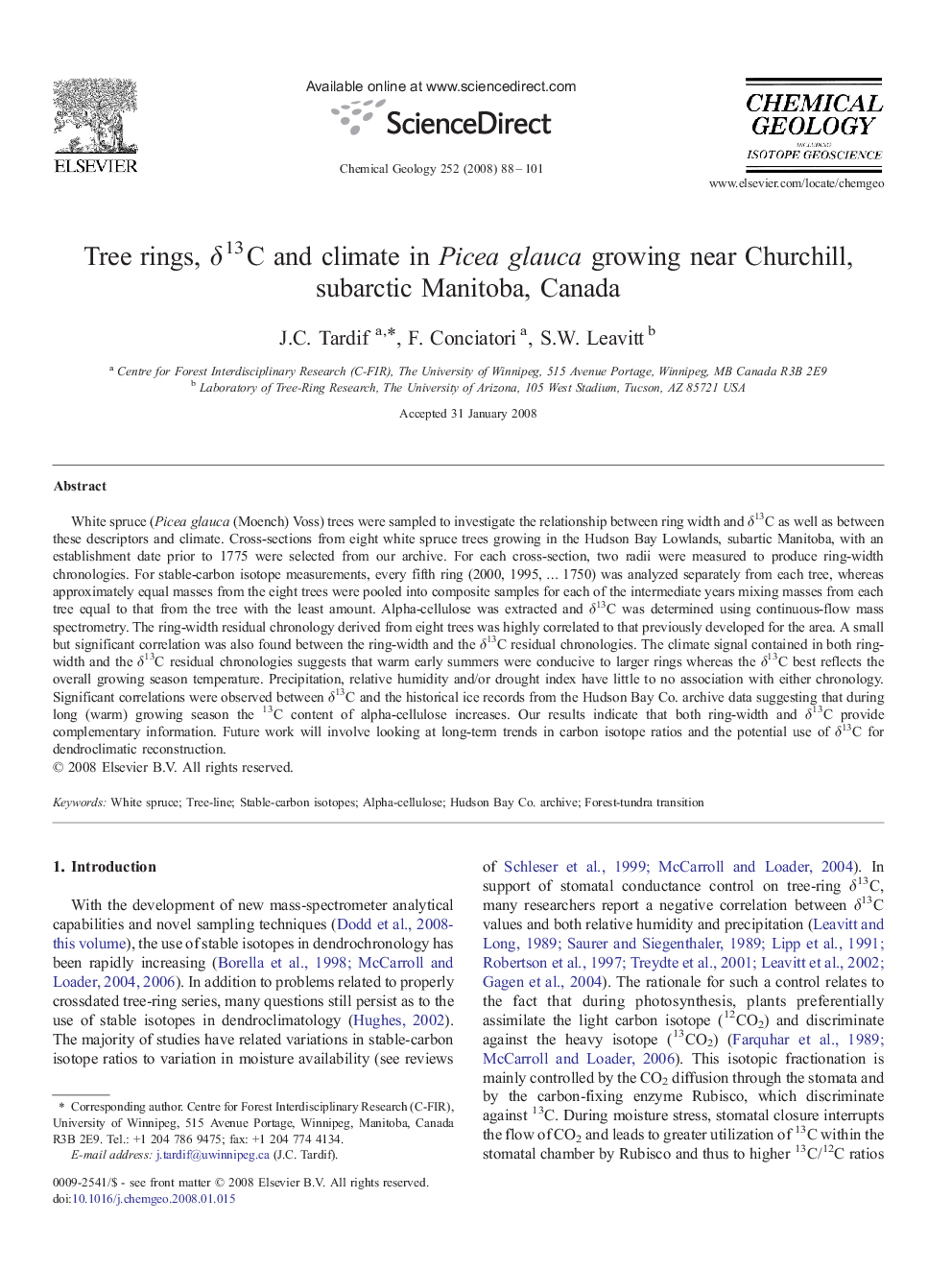| Article ID | Journal | Published Year | Pages | File Type |
|---|---|---|---|---|
| 4700518 | Chemical Geology | 2008 | 14 Pages |
White spruce (Picea glauca (Moench) Voss) trees were sampled to investigate the relationship between ring width and δ13C as well as between these descriptors and climate. Cross-sections from eight white spruce trees growing in the Hudson Bay Lowlands, subartic Manitoba, with an establishment date prior to 1775 were selected from our archive. For each cross-section, two radii were measured to produce ring-width chronologies. For stable-carbon isotope measurements, every fifth ring (2000, 1995, … 1750) was analyzed separately from each tree, whereas approximately equal masses from the eight trees were pooled into composite samples for each of the intermediate years mixing masses from each tree equal to that from the tree with the least amount. Alpha-cellulose was extracted and δ13C was determined using continuous-flow mass spectrometry. The ring-width residual chronology derived from eight trees was highly correlated to that previously developed for the area. A small but significant correlation was also found between the ring-width and the δ13C residual chronologies. The climate signal contained in both ring-width and the δ13C residual chronologies suggests that warm early summers were conducive to larger rings whereas the δ13C best reflects the overall growing season temperature. Precipitation, relative humidity and/or drought index have little to no association with either chronology. Significant correlations were observed between δ13C and the historical ice records from the Hudson Bay Co. archive data suggesting that during long (warm) growing season the 13C content of alpha-cellulose increases. Our results indicate that both ring-width and δ13C provide complementary information. Future work will involve looking at long-term trends in carbon isotope ratios and the potential use of δ13C for dendroclimatic reconstruction.
